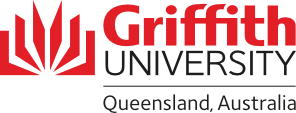Project Description
As efforts to restore coastal habitats accelerate, it is critical that investments are targeted to most effectively mitigate and reverse habitat loss and its impacts on biodiversity. One likely but largely overlooked impediment to effective restoration of habitat-forming organisms is failing to explicitly consider non-habitat-forming animals in restoration planning, implementation, and monitoring. These animals can greatly enhance or degrade ecosystem function, persistence, and resilience. The aim of this project is to develop a scientific approach that improves the monitoring of animals in restored landscapes and show how this information can be used to maximise the benefits of marine restoration. This will be achieved through the following objectives:
1. Measure ecological functions and animal fitness within restored seagrass ecosystems.
2. Use artificial intelligence to streamline and enhance animal monitoring in restored seagrass ecosystems.
3. Evaluate relationships between animal health, seagrass health and restored habitat characteristics, and develop best practice guidelines for marine ecosystem restoration.
4. Develop a database of animal responses across all global coastal restoration initiatives.
Project Personnel and Beneficiaries
The key institutions and people currently involved are Griffith University (Prof. Rod Connolly, Ms Jasmine Rasmussen) and Southern Denmark University (Prof. Mogens Flindt, Dr Rune Steinfurth, Mr Benjamin Nelsen). Ultimately, the project aims to benefit anyone undertaking the restoration of coastal ecosystems, particularly seagrasses. By doing so, the project should provide benefits for wildlife conservation, and ecosystem services including water purification, fishing and eco-tourism.
Outcomes to Date
We have shown that understanding when, why, and how to directly manipulate or support animals can enhance coastal restoration outcomes. In support of this expanded restoration approach, we provided a conceptual framework and describe potential actions that could lead to better restoration outcomes using case studies to illustrate practical approaches (Sievers et al. 2022).
We have also constructed a database quantifying how animals are responding to global coastal restoration efforts (>5000 data points). We have used this data to show that animal responses are highly variable; the implications of which are far-reaching, affecting environmental benefits, policy commitments, conservation finance, and offset schemes.
Finally, we have surveyed fauna within a series of restored seagrass patches in Vejle, Denmark. By identifying drivers of animal colonisation and health, we can improve both monitoring practices and restoration methodologies to maximise benefits of restoration in the future.
Project Significance
Target 14.2 of SDG14 is about taking action to restore marine and coastal ecosystems in order to achieve healthy and productive oceans. This project aims to improve evaluations of marine ecosystem restoration through the measurement of key animal health metrics, and automated monitoring using artificial intelligence. This project expects to generate unique knowledge about why ecosystem restoration succeeds or fails and improve our understanding of how animal data can better inform future restoration projects. The knowledge gained in this project will contribute to setting clearer goals for restoration, better understanding the factors influencing animal responses, improve capacity for predicting outcomes, and ultimately enhancing the success of coastal restoration initiatives.

